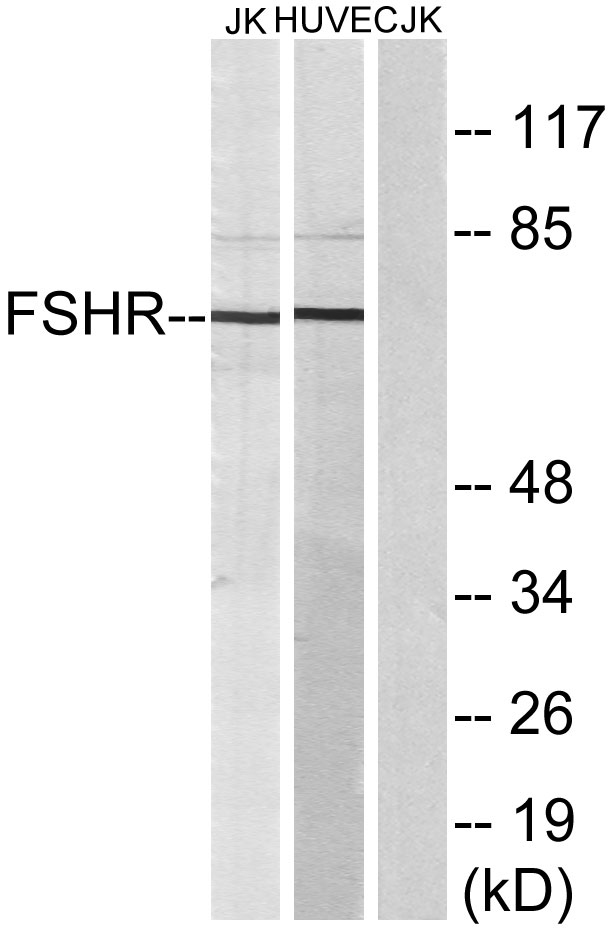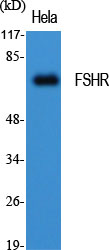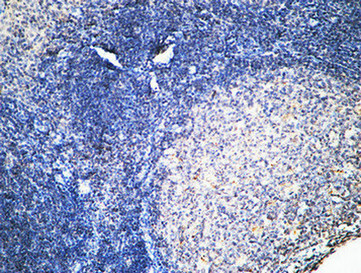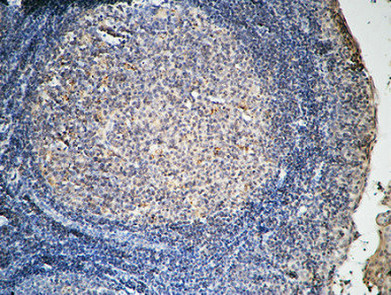产品名称
FSHR Rabbit Polyclonal Antibody
别名
FSHR; LGR1; Follicle-stimulating hormone receptor; FSH-R; Follitropin receptor
蛋白名称
Follicle-stimulating hormone receptor
存储缓冲液
Liquid in PBS containing 50% glycerol, 0.5% BSA and 0.02% New type preservative N.
Human Gene Link
http://www.ncbi.nlm.nih.gov/sites/entrez?db=gene&term=2492
Human Swissprot No.
P23945
Human Swissprot Link
http://www.uniprot.org/uniprotkb/P23945/entry
Mouse Gene Link
http://www.ncbi.nlm.nih.gov/sites/entrez?db=gene&term=14309
Mouse Swissprot No.
P35378
Mouse Swissprot Link
http://www.uniprot.org/uniprot/P35378
Rat Gene Link
http://www.ncbi.nlm.nih.gov/sites/entrez?db=gene&term=25449
Rat Swissprot Link
http://www.uniprot.org/uniprot/P20395
免疫原
The antiserum was produced against synthesized peptide derived from human FSHR. AA range:211-260
特异性
FSHR Polyclonal Antibody detects endogenous levels of FSHR protein.
稀释度
IHC-p: 100-300.WB 1:500 - 1:2000. ELISA: 1:5000.. IF 1:50-200
宿主
Polyclonal, Rabbit,IgG
背景介绍
The protein encoded by this gene belongs to family 1 of G-protein coupled receptors. It is the receptor for follicle stimulating hormone and functions in gonad development. Mutations in this gene cause ovarian dysgenesis type 1, and also ovarian hyperstimulation syndrome. Alternative splicing results in multiple transcript variants. [provided by RefSeq, Mar 2010],
组织表达
Sertoli cells and ovarian granulosa cells.
细胞定位
Cell membrane ; Multi-pass membrane protein .
信号通路
Neuroactive ligand-receptor interaction;
功能
disease:Defects in FSHR are a cause of ovarian dysgenesis 1 (ODG1) [MIM:233300]; also known as premature ovarian failure or gonadal dysgenesis XX type or XX gonadal dysgenesis (XXGD) or hereditary hypergonadotropic ovarian failure or hypergonadotropic ovarian dysgenesis with normal karyotype. ODG1 is an autosomal recessive disease characterized by primary amenorrhea, variable development of secondary sex characteristics, and high serum levels of follicle-stimulating hormone (FSH) and luteinizing hormone (LH).,disease:Defects in FSHR are a cause of ovarian hyperstimulation syndrome (OHSS) [MIM:608115]. OHSS is a disorder which occurs either spontaneously or most often as an iatrogenic complication of ovarian stimulation treatments for in vitro fertilization. The clinical manifestations vary from abdominal distention and discomfort to potentially life-threatening, massive ovarian enlargement and capillary leak with fluid sequestration. Pathologic features of this syndrome include the presence of multiple serous and hemorrhagic follicular cysts lined by luteinized cells, a condition called hyperreactio luteinalis.,function:Receptor for follicle-stimulating hormone. The activity of this receptor is mediated by G proteins which activate adenylate cyclase.,online information:Glycoprotein-hormone Receptors Information System,online information:The Singapore human mutation and polymorphism database,PTM:N-glycosylated; indirectly required for FSH-binding, possibly via a conformational change that allows high affinity binding of hormone.,similarity:Belongs to the G-protein coupled receptor 1 family.,similarity:Belongs to the G-protein coupled receptor 1 family. FSH/LSH/TSH subfamily.,similarity:Contains 10 LRR (leucine-rich) repeats.,tissue specificity:Sertoli cells and ovarian granulosa cells.,
纯化
The antibody was affinity-purified from rabbit antiserum by affinity-chromatography using epitope-specific immunogen.


.jpg)



